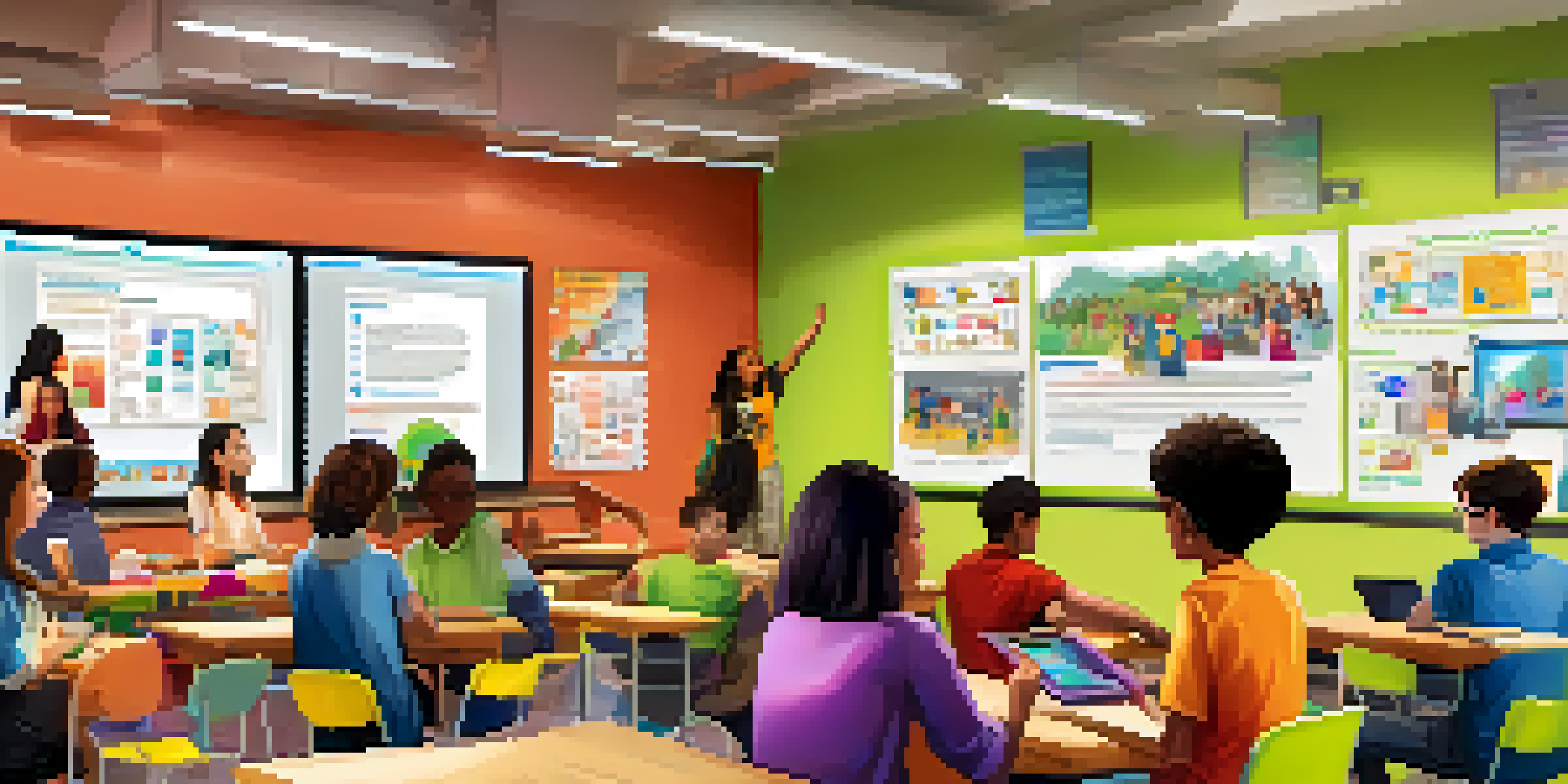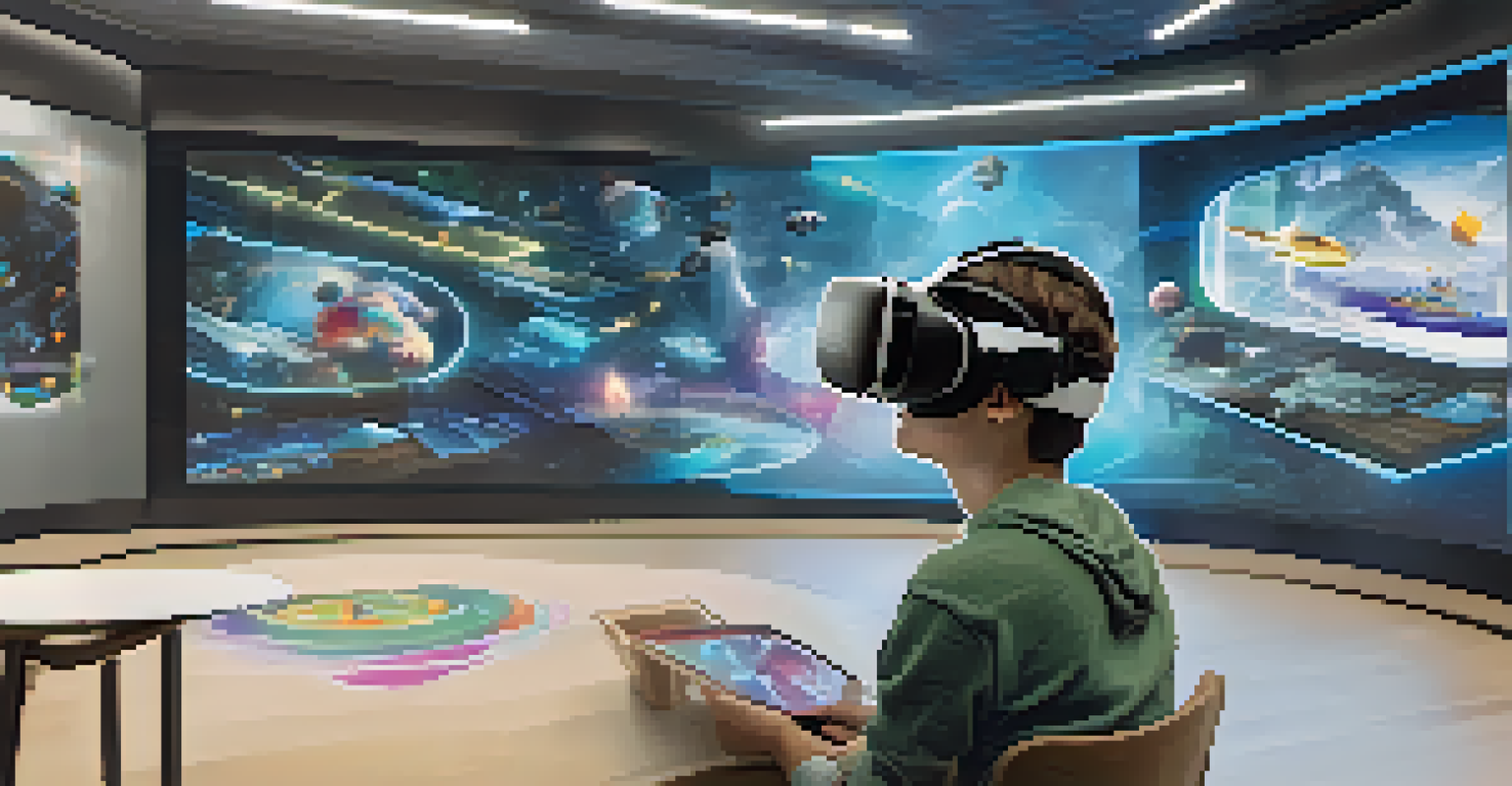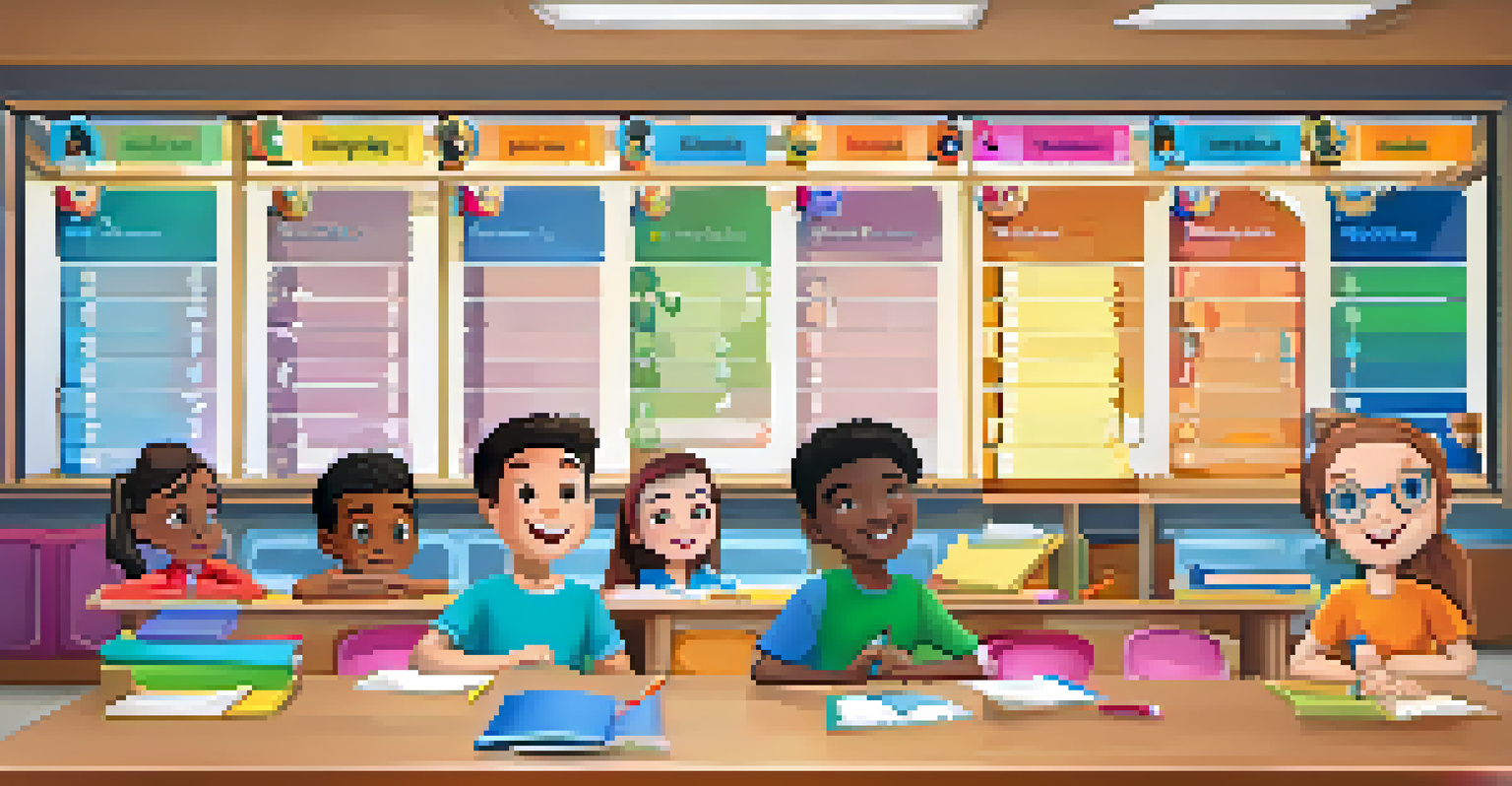Challenges and Solutions in Implementing Gamification in Learning

Understanding Gamification and Its Importance in Learning
Gamification involves applying game design elements in non-game contexts, particularly in education. In learning, it can transform traditional methods by making them more engaging and interactive. For instance, incorporating points, badges, and leaderboards can motivate students to participate actively.
Gamification is not about playing games; it's about using the principles of game design to engage and motivate learners.
The importance of gamification lies in its ability to enhance motivation and retention. When learners enjoy the process, they are more likely to absorb information and develop skills effectively. Think of it as turning a tedious road trip into a fun adventure with exciting stops along the way.
However, while gamification has its advantages, it's essential to understand the challenges that come with implementing it in educational settings. Recognizing these obstacles can help educators better prepare and create successful gamified learning experiences.
Identifying Common Challenges in Gamification Implementation
One of the primary challenges in gamifying learning is resistance from both educators and students. Some teachers may feel overwhelmed by new technology, while students might not see the value in game-like elements. This resistance can hinder the adoption of gamification strategies.

Another significant hurdle is the lack of clear objectives. Without well-defined goals, gamification can become a distraction rather than a learning aid. Imagine playing a video game without a clear mission; it’s easy to lose interest and motivation.
Gamification Boosts Engagement
By incorporating game elements like points and badges, gamification makes learning more interactive and enjoyable.
Additionally, not all learners respond to gamification in the same way. What excites one student may bore another, leading to a one-size-fits-all approach that fails to engage everyone. This variability in response can make it challenging to design universal gamification strategies.
Balancing Game Elements with Educational Goals
Finding the right balance between game mechanics and educational content is crucial. Overemphasizing game elements can shift focus away from learning objectives. For example, if students are more interested in earning points than mastering a subject, the intended educational benefits are lost.
The real power of gamification lies in its ability to create a more engaging and personalized learning experience.
It’s essential to integrate game features thoughtfully, ensuring they complement the learning experience. This might involve using storytelling techniques to create a narrative that aligns with curriculum goals. When students can relate to the content, they’re more likely to engage meaningfully.
Moreover, educators should continuously assess and adjust game elements based on student feedback. This iterative approach can help maintain the educational focus while keeping the learning environment dynamic and enjoyable.
Designing Inclusive Gamified Learning Experiences
Creating gamified experiences that cater to diverse learning styles is another challenge. Not every student learns the same way, and some may struggle with competitive elements. It's crucial to ensure that gamification includes cooperative and collaborative opportunities as well.
For example, team-based challenges can foster a sense of community while still promoting individual learning. This approach allows students to support one another, making the learning process more inclusive and enjoyable. Think of it as a group project where everyone contributes to a shared goal.
Challenges in Implementation
Resistance from educators and unclear objectives can hinder the effective adoption of gamification in educational settings.
Incorporating various game types and options can also help address different preferences. By offering choices, educators can empower students to engage in learning in ways that resonate with them personally.
Leveraging Technology for Effective Implementation
Technology plays a pivotal role in implementing gamification in learning. Digital platforms can offer interactive and immersive experiences that traditional methods cannot. However, the challenge lies in choosing the right tools that align with educational goals.
Educators must be aware of the available technologies and how they can enhance gamification. For example, platforms like Kahoot! or Quizizz make it easy to create engaging quizzes that incorporate game elements. The right technology can transform a standard assessment into a fun competition.
Additionally, ensuring that all students have access to these technologies is vital. Addressing issues of accessibility can prevent creating disparities in learning opportunities, ensuring that gamified experiences are equitable for all.
Measuring the Impact of Gamification on Learning Outcomes
One significant challenge in gamification is measuring its effectiveness on learning outcomes. Educators need to establish metrics to assess whether gamified elements are enhancing student engagement and understanding. This evaluation can help refine gamification strategies over time.
Using analytics tools can provide valuable insights into student performance and engagement levels. By analyzing data, educators can identify which gamification elements are effective and which may need adjustment. It's like tracking your progress in a video game—knowing what's working keeps you motivated.
Tech Enhances Learning Experiences
Leveraging digital tools can create immersive gamified experiences, but ensuring accessibility for all students is crucial.
Moreover, gathering student feedback can help educators understand their experiences better. By involving learners in the evaluation process, teachers can create a more responsive and tailored gamified learning environment.
Future Trends in Gamification and Learning
As technology evolves, so does the potential for gamification in learning. Emerging trends, such as virtual reality (VR) and augmented reality (AR), are poised to create even more immersive educational experiences. These advancements can transport students to different environments, enhancing engagement and learning.
Gamification is also likely to become more personalized. With the help of artificial intelligence, learning experiences can be tailored to individual preferences and progress, making education more relevant and engaging. Imagine a game that adapts to your skill level, providing challenges just right for you.

Looking ahead, the key will be to maintain a balance between innovation and educational integrity. As we explore new gamification methods, it’s essential to remember the ultimate goal: enhancing student learning and fostering a love for knowledge.